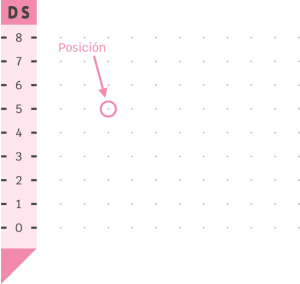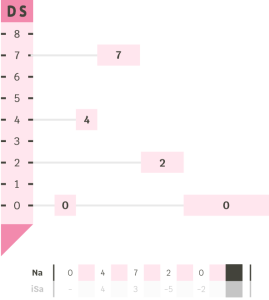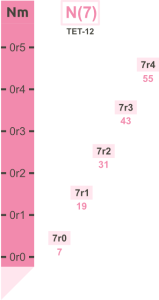The Note (N)
The Note is the positional basic element of the sound dimension. A Note is a specific position on the sound line:
 |
 |
THE COLLECTION OF CHROMATIC NOTES
We generally use the Note collection of the chromatic scale, which is organized in 7 registers of 12 Notes each, with a total of 84 notes ranging from Note (0) to Note (83):

The Note (0) always represents the lowest frequency, and the highest frequency is represented by the number that corresponds to the range of Notes available (in this case it is Note 83).
In case of dividing the register into any number other than 12, we obtain a different collection of notes, based on a different tuning system. Let’s see an example by dividing the record into 8 equal parts:

Notes can be expressed in absolute and modular numbering. If a Note is expressed in modular numbering but its register does not appear, as for example N (7), we still do not know its exact position, since all registers are possible. Thus the position of N (7) could be specified as N (7r0), N (7r1), N (7r2), N (7r3), N (7r4), etc:

In order to specify the position of the Notes expressed in modular numbering, we use the register (r0, r1, r2, r3, r4, r5, r6).
However, remember that a Note expressed in absolute numbering is already an exact position that does not need to be specified.

